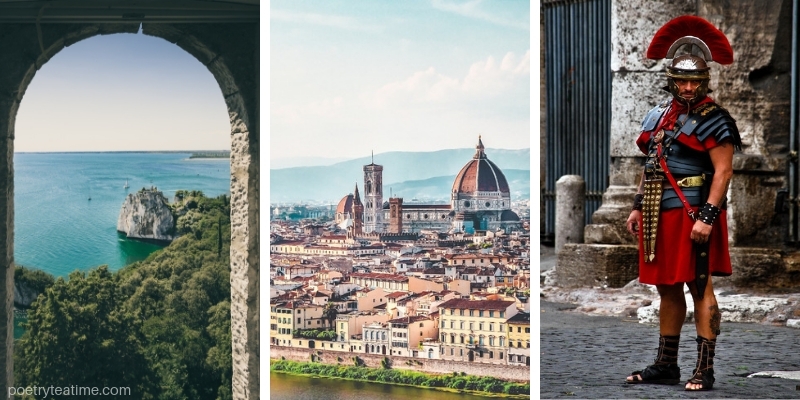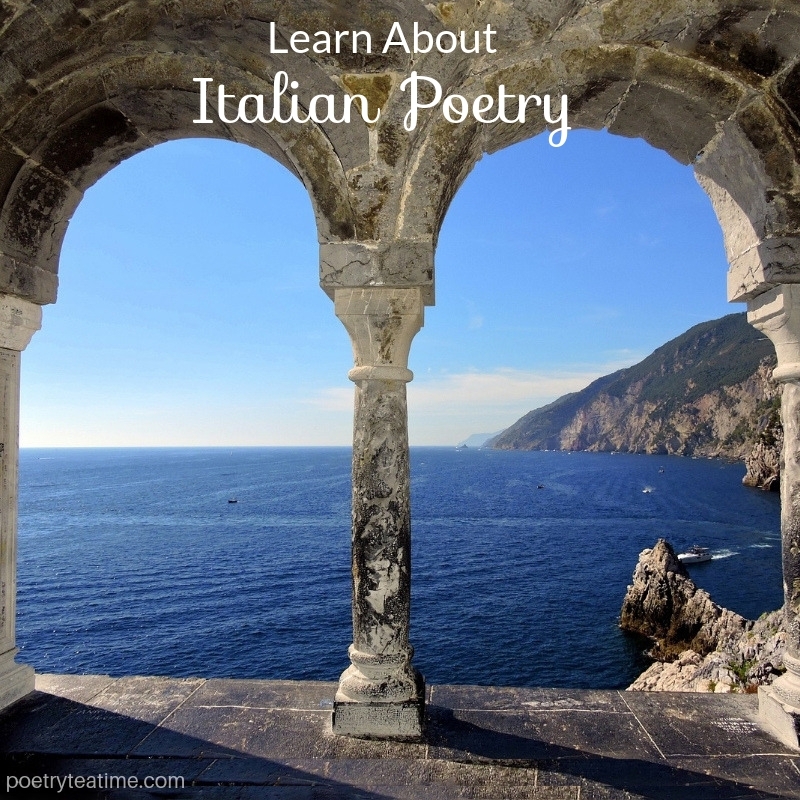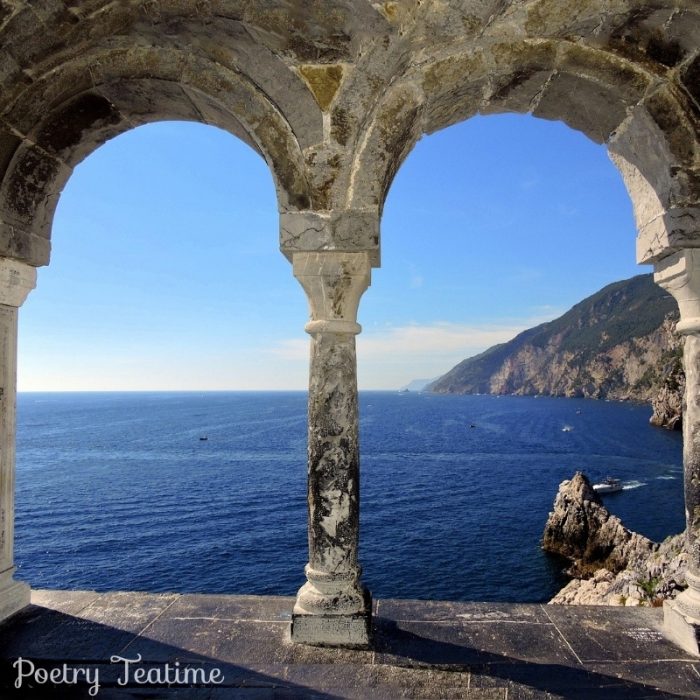If you think a canzone is a folded pizza or a strambotto is a type of pasta, then it’s time to put down your fork and spoon and dig into some Italian poetry! Get ready to travel across time and space and investigate the awe-inspiring variety of Italian poems.
[This post contains Amazon affiliate links. When you click on those links to make purchases,
Poetry Teatime receives compensation at no extra cost to you. Thank you!]
When you think of Italian poetry, you may think of Roman poems like Virgil’s Aeneid. Originally, Roman poets would take their subject matter and even the style of their poetry from Ancient Greek forms of poetry.
But the history of Italian poetry doesn’t stop there.
Poets writing in Latin began to experiment and expand on their Greek predecessors. In the Middle Ages, court singers called troubadours entertained their wealthy patrons using new patterns of rhyming songs. The complex patterns of rhythm and rhyme they developed helped these troubadours remember long pieces of poetry.
Then, during the Renaissance, Italian poetry reached a dazzling height of innovation with inventive rhyme schemes, elaborate styles, and lots of interlocking patterns. Dante’s Divine Comedy and Petrarch’s Italian sonnet form are both examples of this.
Here are just a few Italian poetic styles. Remember, you can find our list of poetic terms right here.
- Terza rima: three-line stanzas with a rhyme scheme of ABA BCB CDC; famously used in the Divine Comedy
- Canzone: related to the French “chanson,” meaning song or ballad; varies in length but usually between 5-7 rhyming stanzas; meant to be sung
- Italian madrigal: love song made of triplets or couplets
- Ottava rima: an 8-line stanza in iambic pentameter with a rhyme scheme of ABABABCC; famously used by Lord Byron in Don Juan
- Heroic Rispetto: a long poem in iambic pentameter made up of a series of two rhyming quatrains with an ABAB CCDD pattern (heroic refers to the length of the poem, not the subject matter)
- Strambotto: six or eight stanzas about lyrical, sentimental, or amorous topics with a rhyme scheme of ABABCCDD

Italian Poetry Today
Now, what does Italian poetry look like today? You can find a great collection of Italian rhymes and songs for kids with English translations and audio from Mama Lisa. Let’s take a look at an excerpt from one, first in Italian, then in English.
“Temporale Estivo” or “Summer Lighting Storm”
By Federigo Tozzi
...Ecco un lampo: guizza, abbaglia,
sembra incendi il cielo....
...Here’s a flash: it darts, it dazzles,
It seems to set the sky on fire...
You can find the poem in full and hear a recording in Italian here.
Be sure to enjoy some Italian poetry during your own teatime. Find books and resources below, including language-learning help and tools for learning about the Italian Renaissance!
Italian Poetry Books
The Divine Comedy by Dante, translated by John Ciardi
The Poetry of Petrarch, translated by David Young
Fifteen Sonnets of Petrarch, translated by Thomas Wentworth Higginson (available on Project Gutenberg)
The Aeneid by Virgil, translated by Robert Fitzgerald
Beginning Latin Poetry Reader, edited by Gavin Betts and Daniel Franklin
Introduction to Italian Poetry: A Dual-Language Book, edited by Luciano Rebay
Resources for Italian Poetry and Language
- Mama Lisa’s Italian rhymes and songs for kids
- Resources about the Renaissance from the Renaissance Society of America
- Poetry Teatime article about Petrarch
- Poetry Teatime story about a Roman teatime, including elements of Roman philosophy to learn about and put into practice



